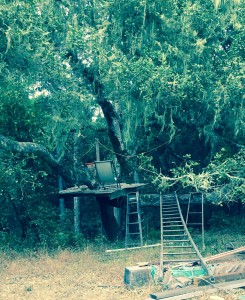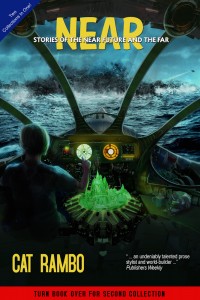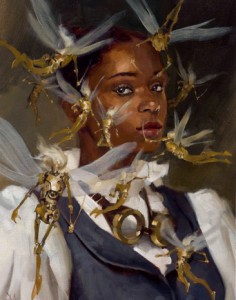So, what’s the difference between taking one of my live online writing classes and the on-demand versions? Let’s look at the cons first:
- No live interaction, which is a little sad. You can comment on the class material, though, which you have access to in perpetuity, or at least as long as it’s up.
- No chance to hear other people’s work with the exercises or get a chance to chat with them.
Pros, on the other hand?
- A bit more lasting. As I said, you do get permanent access, including when the material updates.
- Work at your own pace. Want to do an exercise more than once? Go for it. Want to stretch things out or take a break for that trip to Bermuda? You’re fine.
- Considerably cheaper than the live version — half the price, usually.
- Considerably expanded material and more exercises. The character building workshop ended up being close to 20,000 words; this one will match and probably surpass that.
Want a preview? Here’s an early page, Description as Collaboration:
The Writer/Reader Relationship
Description is a collaboration between writer and reader. You provide a handful of details; from them your reader constructs a three-dimensional experience. You build the funhouse ride, but so does your reader, an experience that will differ — sometimes radically — from reader to reader, depending on their experiences and depth of imagination.
It begins the minute you supply a detail. The author says “red” and immediately a red — perhaps a bright candy apple red, maybe something murkier — appears in the reader’s mental vision. Add “wheelbarrow,” and they supply a wheelbarrow based on the ones they’re most familiar with. Add “glazed with rain” and the possibilities splinter even further.
And that’s fine. It is an inescapable fact and nothing you can do will change it. It is impossible for you to include the depth and range of detailed description that would be necessary to unquestionably determine every nuance for the reader.
Choices Matter
As soon as an author introduces a detail, it begins to grow in the reader’s mind. And unspoken behind every detail is an authorial I selected this detail rather than any other for a reason that will matter to the reader. That is perhaps one way of looking at writing: the art of selecting and conveying details in an order that creates a complete experience for a reader.
How the author presents details — which details are mentioned, the things that are included about them, and the wording and syntax in which they are presented — is one of the major factors that creates style and tone.
Style might be defined as the overall way in which the story is told. It is different than the content of a story, but usually content and style are linked and work together.
Tone is the overall emotion or mood of a story, and is created primarily but not solely by the style and word choice.
Here’s a photo of a thrift shop object described in two different styles, then two different tones*.- Style example #1: There it stood, the proud ceramic, small in stature but twice as splendid. The corn god glared out, positioned, poised, ready to bring autumn to the land.
- Style example #2: Paul glanced down at the statue. Small. Yellow and orange. Glazed. Corncob-extured body. Why this, he wondered.
- Tone example #1: The little statue was a welcome find, smiling at her from the shelf, colored like the first autumn leaf. It was solid in her fingers, still smiling up at her as she tilted it to see if there was any marking on the weathered bottom and with a thrill of pleasure saw the mark, right where she had hoped.
- Tone example #2: Shadows gathered in the corners of the curiosity and her scalp prickled, as though in warning, as she picked up the little yellow statue. It felt ominously solid in her fingers as she tilted it to look at the base. The sight of the marking struck her like a blow.
Same object, four different stories. Stop now and do a five minute timed writing with your own description of the object.
Don’t Jar Your Reader
Because of a reader’s inclination to create what’s happening in a story in their head, experiencing it in something like a dream, or at least that state of fierce inattention to anything else in which a spouse, child, or friend can speak repeatedly before being perceived. That’s the delicious immersion that is part of the joy of reading and part of it is making the reader comfortable enough to forget that they are reading.
An author must lull a reader into trusting them, by letting them know that they will deliver that immersion, in part by not ever reminding the reader that they are reading. Anything that reminds a reader of this fact generally should be avoided, unless you’re doing something funky and metafictional.
And the thing that reminds a reader that they are reading more than anything else is the author supplying a detail that the reader has already firmly fixed in their head. This is a moment which for a reader is like having the GPS in your car suddenly go “Recalculating” because you took a wrong turn. It should be avoided at all costs. Paying attention to the collaboration and what expectations you are creating in your reader is important. Get the hang of that and you can even play with and subvert those expectations.
*I make no claim any of this is good writing, simply a good example.
If you’d like to get more information about classes as they appear, including upcoming special holiday gift certificates, fill out the following:







